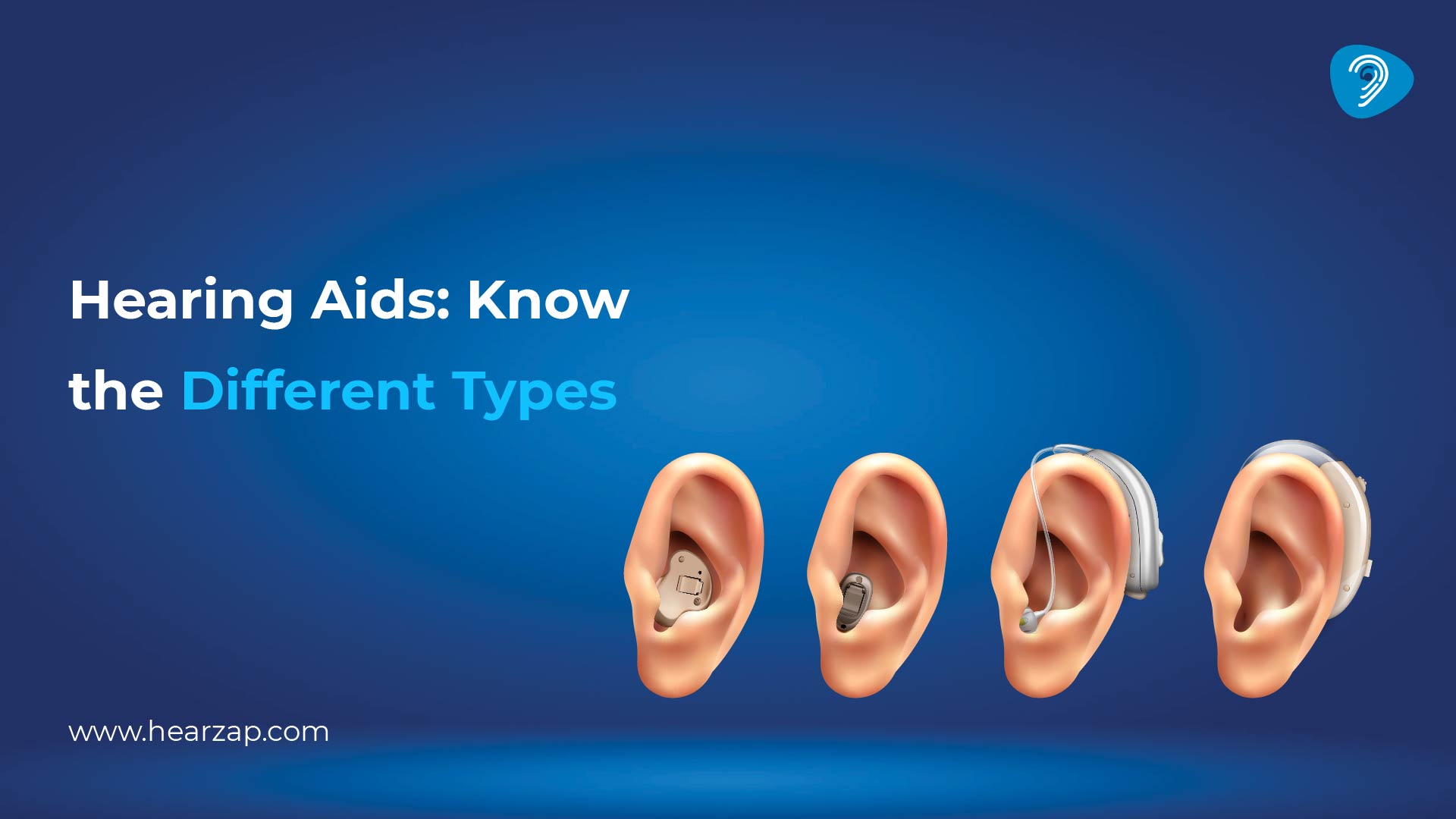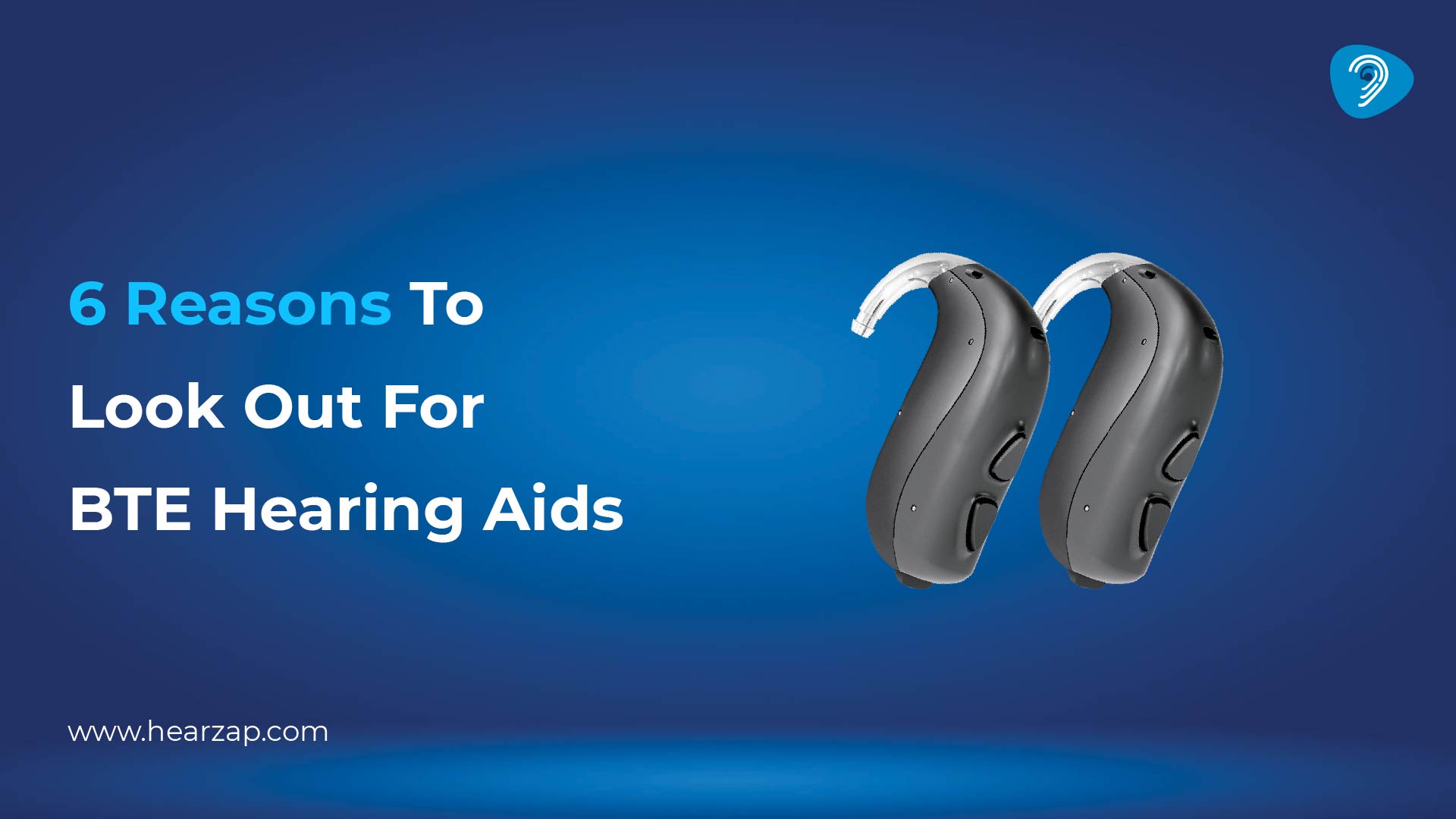HEARING AIDS
7 Reasons To Upgrade Your Hearing Aid Today
By Team Hearzap | June 25, 2024

The world around us is changing at a high pace. There is an overall development in every sphere. Nowadays, we are extremely tech-savvy, and all our products are smart, compact, and efficient. Technological advancements in the health industry have also included Hearing Aids. Integration of technologies such as Bluetooth, AI, rechargeability, and water-resistance, in hearing aids, has made life easier and indulgent for a better hearing experience.
Technologies in Hearing Aids
The hearing aids from a decade back came with features that made hearing better, but at the same time, they didn't provide as much comfort as the hearing aids of today. Older hearing aids had the tendency to amplify all types of unnecessary sounds from the environment, making it difficult for its wearer to identify speech. The introduction of the directional microphone has been able to solve this issue. Again, the new hearing aids can adjust to environmental sounds automatically whereas the older ones needed manual adjustment. The new wireless technology has been able to solve the connectivity problems to cell phones or televisions.
Furthermore, there are mainly two types of hearing aids available today; those are analog and digital hearing aids. The most commonly used type of hearing aids today is digital hearing aids as they are more advanced in technology and are easier to operate. Under digital hearing aids, there are two types of hearing aids; which are programmable and non-programmable.
While the need for an upgrade differs from person to person, below are some reasons for you to opt for an upgrade.
Hearing aids with rechargeable technology:
Hearing aids have two types of batteries; rechargeable and non-rechargeable. The non-rechargeable hearing aids are the type that requires changing batteries regularly. The rechargeable hearing aids have batteries that can be recharged at any time at the user's home itself, this process is more convenient and relieves the user of the inconvenience of buying and replacing the batteries at regular time intervals.
Using the non-rechargeable ones is a challenge for people with dexterity problems and issues with commuting. Rechargeable hearing aids may work well for people who can adapt to a routine charging schedule.
Digital hearing aids with noise reduction:
Digital hearing aids can determine natural sounds. A user can personalise the sounds with the help of new settings that reduce noise and help them hear at their level of comfort. The new settings can personalise even the volume settings.
Digital hearing aids can reduce the noise levels from the background and increase the comfort of wearing them. It also has features like noise reduction, impulse noise reduction, and wind noise reduction where a person can happily spend time in an outdoor setting or playing their favourite sport like golfing, kayaking, badminton, etc.
Hearing aids that are more compact:
Initially, hearing aids were very bulky and felt very heavy on the ear. Due to its size and the stigma around its appearance, many people just hoped for something better and more comfortable to wear. But Hearing aids today continued to resize into much smaller sizes with better power. “Invisible Hearing aids” are smaller and offer a snug and comfortable fit.
Advanced hearing aids with Feedback Management Systems:
Feedback management systems resist the inevitable feedback (screeching sound caused due to the microphone taking in output from the speaker) in a hearing aid. These feedback loops create an annoying sound that can get in the way of your hearing.
Advanced feedback management systems reduce or eliminate feedback and external wind noise without affecting the overall sound clarity of the hearing aid.
Hearing Aids Are Connected – For Ease of Use and Better Sound:
Previously, hearing aids were devices that used to work independently to adjust the volume or frequencies. These days, it comes with a technology that uses wireless connectivity to sync with devices like mobile phones, laptops, radio, television, music system, etc., and make adjustments via an online application.
Hearing aids with waterproof technology:
Water is the deadly enemy of hearing aids. Extreme humidity, a quick shower, or a dip in the pool can damage them permanently. Advanced hearing aids come with moisture-proof, sweat-proof, and water-resistant features. These are built for a more rugged lifestyle that is beneficial for people who are athletic and love to swim.
Hearing aids with AI technology:
Philips and Rexton now offer highly advanced hearing aids that come with AI technology. This means they are capable of isolating speech sounds and making them clearer for the wearer of the hearing aid. AI-enabled hearing aids, automatically reduce feedback by recognizing it in the receiver through AI. They help with noise cancellation to prevent the wearer from hearing any disturbing sounds. These AI-enabled hearing aids are a tad expensive but are definitely worth upgrading to.
Hearzap is India’s first digital hearing care ecosystem with the first of its kind hearing experience stores. We have the widest range of premium hearing aids that are globally acclaimed. Come visit us to get accurate hearing tests and never miss a moment with your loved ones.
Related Blogs

Hearing Aids: Know the different types

6 Reasons to Look Out for BTE Hearing Aids
Contact us
We are here for all your hearing needs, from hearing tests to hearing aids. Fill out the form below, and we will give you a call soon.
Please enter a valid mobile number with 10 digits.
Recent Blogs
By Team Hearzap | July 10, 2025
By Team Hearzap | July 9, 2025
By Team Hearzap | July 8, 2025
By Team Hearzap | July 7, 2025
By Team Hearzap | July 7, 2025
Newsletter Subscription
Subscriber to one-stop hearing care newsletter.









